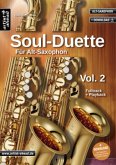The form of these concertos is concise and concentrated, even in a moderate tempo none of them lasts longer than eight minutes. The fast movements are fresh and lively. The slow ones are expressive and make use of uncommon harmony. Because of the imitative disposition all parts are equally involved in the materials' treatment. The antiphonal opposition of instrumental groups in pairs is especially prominent.In the manuscript of the Concerto in G-major TWV 40:201, the only dynamic markings can be found in the last movement. They have been printed as forte and piano. The slurs in the first movement are original as are most of the eighth note slurs in the last movement. Where slurs were missing or inaccurate they have been added and unified. Trills that are not in the original were put in brackets.Some passages exceed the key range of the saxophone. They are marked 8vb and may be performed an octave lower. In that case, Alto 2 and 3 should also play an octave lower in the last movement (starting in bar 89/90).Instrumentation:4 alto saxophonesTWV 40:201Die Form der Konzerte ist kompakt und konzentriert, selbst in gemäßigtem Tempo dauert keines länger als acht Minuten. Die schnellen Sätze sind frisch und lebendig, die langsamen ausdrucksstark und harmonisch teilweise recht ungewöhnlich. Durch die imitatorische Anlage sind alle Stimmen nahezu gleichberechtigt an der Verarbeitung der Themen beteiligt. Besonders auffällig ist dabei auch die antiphone Gegenüberstellung von Stimmpaaren.Im Manuskript des Concerto in G-Dur, TWV 40:201 finden sich nur im letzten Satz Angaben zur Dynamik. Dort wurden sie ausgeschrieben (forte, piano). Die Bindungen im ersten Satz sind original, ebenso die meisten Achtel-Bindungen im letzten Satz. Fehlende oder ungenaue Bindungen wurden ergänzt oder vereinheitlicht. Ergänzte Triller sind in Klammern gesetzt.An manchen Stellen wird der Klappenumfang des Saxophons überschritten. Diese sind mit 8vb bezeichnet und können auch eine Oktave tiefer gespielt werden. Im letzten Satz (ab T 89/90) sollten dann auch das zweite und dritte Altsaxophon oktavieren.Schwierigkeitsgrad: 4-5
Hinweis: Dieser Artikel kann nur an eine deutsche Lieferadresse ausgeliefert werden.
Hinweis: Dieser Artikel kann nur an eine deutsche Lieferadresse ausgeliefert werden.








